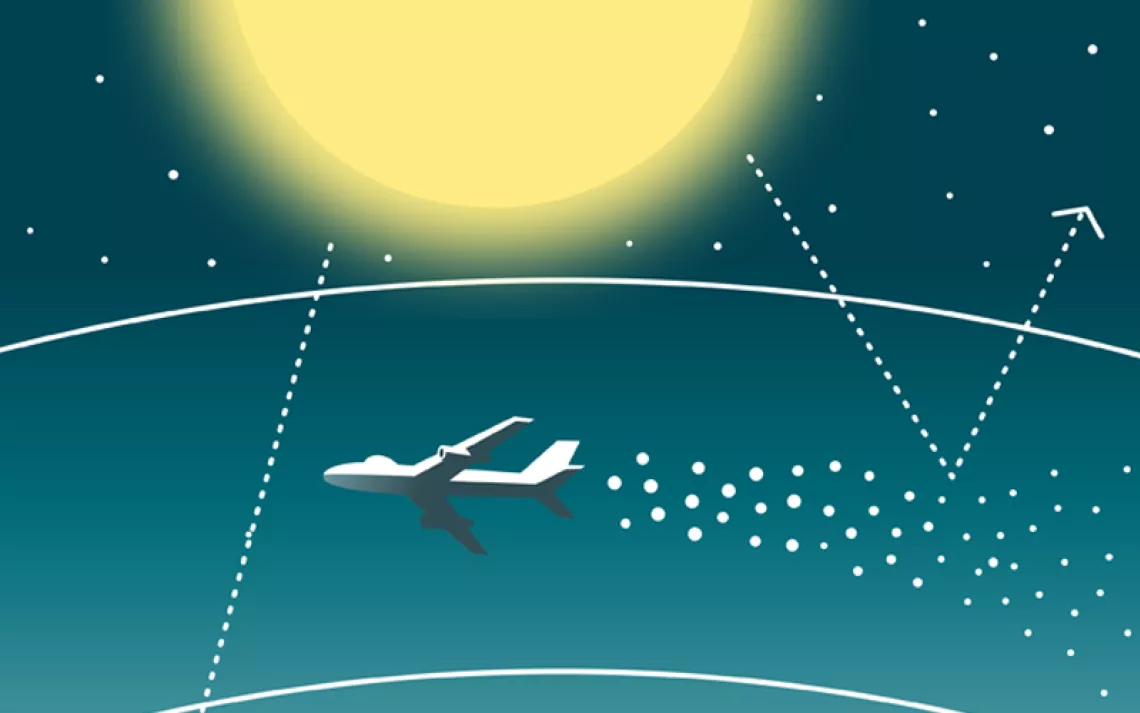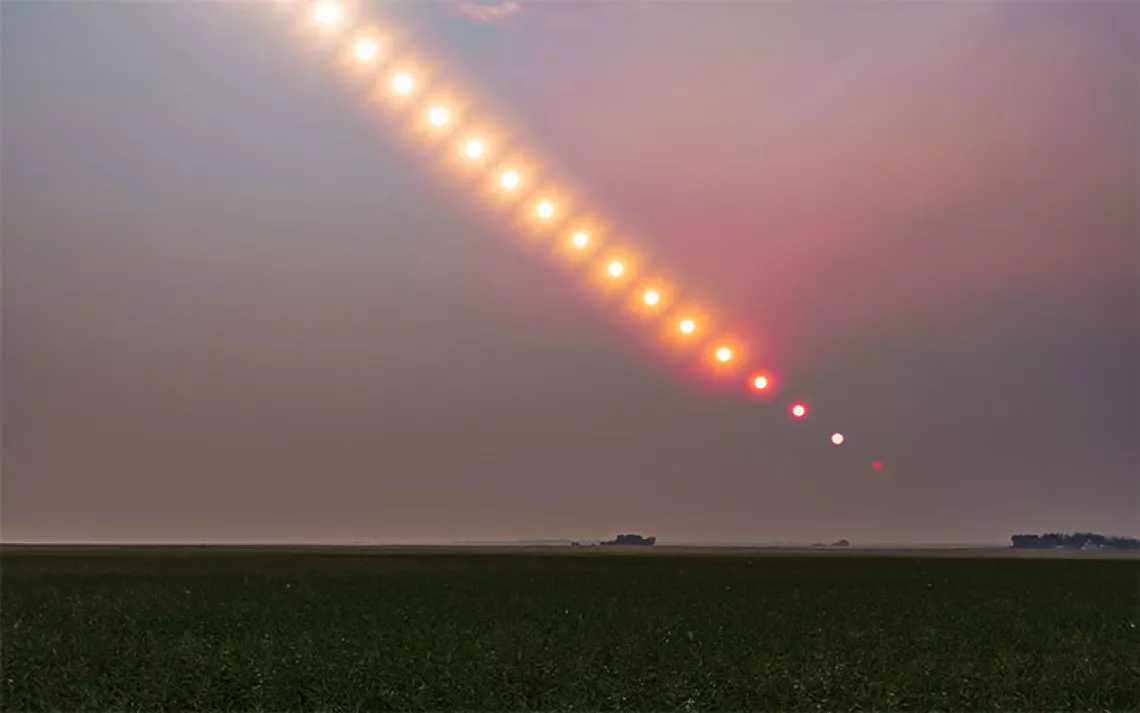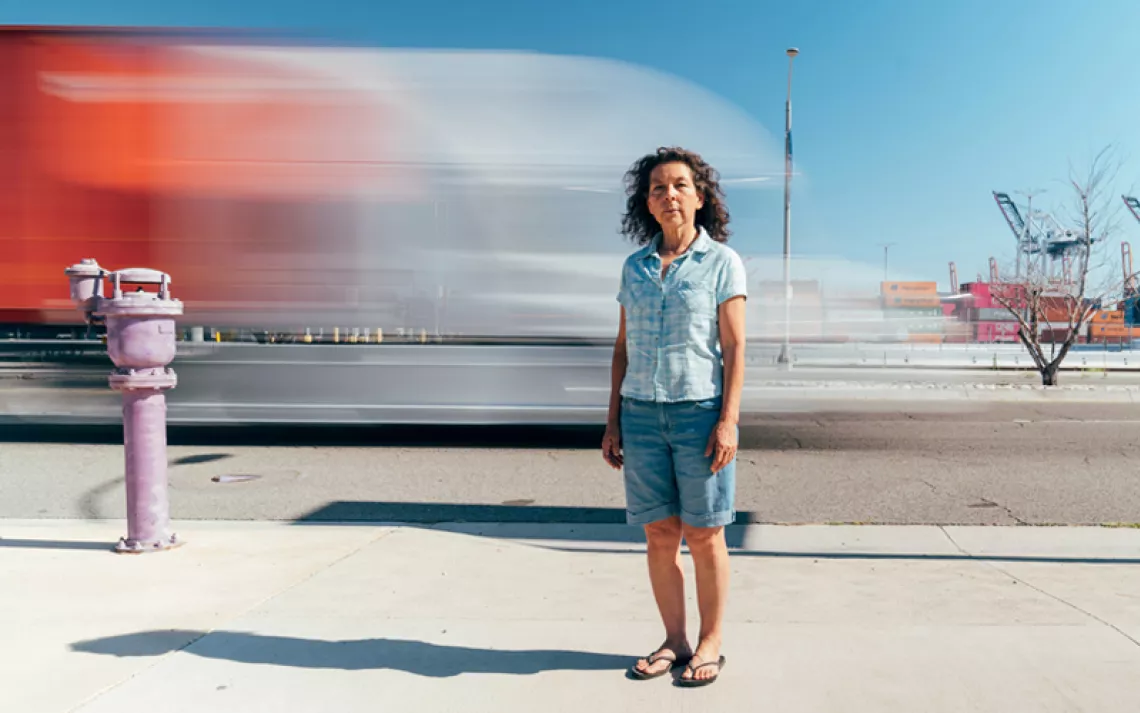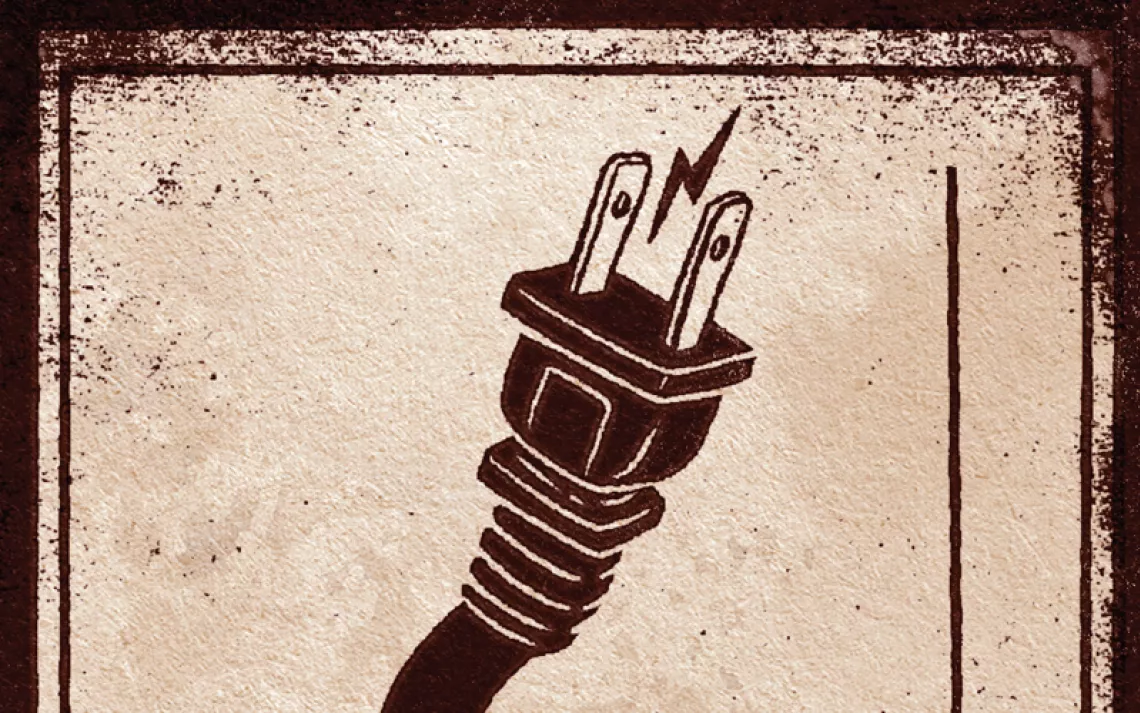Electrify the Elements
Some use the water, sun, and wind for adventure. Others turn these forces into electricity. A small elite do both.
Clinging to the deck of a ketch in a gale, a sailor doesn't think of wind power as a technology promoted by greenies. Kayakers on Chesapeake Bay or Puget Sound know that a powerful tide is no match for any paddle. A surfer who has been held under by a wave respects ocean swells.
These same natural elements are being engaged by engineers, scientists, and entrepreneurs working to solve one of the era's trickiest challenges: converting Earth's sometimes whimsical forces into electricity so reliable that it can be metered. The potential is almost inconceivable. The United States is buffeted each year by 4,000 terawatts of solar power, 1,800 terawatts of wind power, 1,170 terawatts of wave power, and 17 terawatts of tidal power—far more than the 3.9 terawatts of electricity that the country uses annually. If we were to tap a small fraction of that power, the elements could keep our cities running forever.
A few souls have experienced these forces as thrill seekers and number crunchers. Their heads carry a trove of modern knowledge, while their muscles react to the elements like those of the first sailors to unfurl a sail to wind. They're building a renewable energy future by going back to the basics.
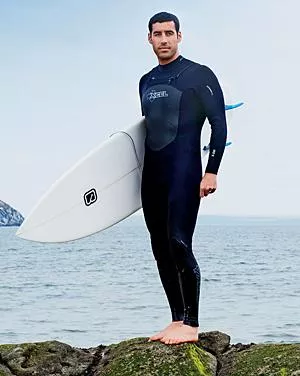
WAVES | Andrew Scott
PROJECT & BUSINESS DEVELOPMENT MANAGER, PELAMIS WAVE POWER
Andrew Scott quickly realized that he shouldn't have ventured into Portugal's Supertubos, one of Europe's most crushing waves, all by himself on a morning so misty that he couldn't even make out the size of the barrels. But the riptide immediately pulled him out, and there was no going back. "If there's this much water moving out," he figured, "there must be a hell of a swell coming in."
Scott was an ocean engineer for Scotland's Pelamis Wave Power, which develops machines that capture energy from ocean swells. For a month in 2008, he was part of a team assembling the company's first commercial installation, off Portugal's northwest coast. The machines he was installing, called P1s, were 400-foot-long carbon-steel tubes painted red and yellow and divided into segments like rail cars. They would undulate on the prevailing swell and send 2.25 megawatts of electricity to shore via a subsea cable.
Scott was frothing for the warmth of Portugal after more than two decades of surfing Scotland's giant breaks, including those off the Outer Hebrides and Orkney Islands, where the swell rolls in from the ice caps of the Arctic Circle. Most surfers can withstand only an hour or two in the 40°F water.
At Supertubos, heavy barrels exploded onto a sandbar no more than knee-deep. Scott knew how much power was embedded in the waves: A three-foot slice of ocean pounding on the northern shoreline of Scotland, for instance, could produce enough energy to power 100 homes. Were Scott to lose his footing at Supertubos, the potential energy of several city blocks might break his back, and with it the promise he'd made to his girlfriend, Hannah, that he would give her a dog, a new car, or a diamond ring on his return.
The graceful, curvilinear swells that surfers ride aren't the P1's forte. It and several similar machines—a freak show of energy harvesters that look like buoys, attic doors, ramps, or blunt-nosed fish—are intended to perform in what hydrodynamicists call the "confused sea," with swells converging from all directions. The P1's multidirectional joints capture the dominant swell while responding to other wavelets that roll or slap it. Each movement activates hydraulic rams filled with high-pressure oil, which routes to a pump, which drives hydraulic motors that run generators that create electricity. If a wave is too steep, the snake ducks, like a surfer. There's more energy in the confused sea than even surfers can imagine. "We'd like to capture a bit of it before it is spent on the shoreline," Scott says. Pelamis engineers must do that and reliably deliver electricity despite salt exposure, barnacle fouling, and the occasional titanic storm.
That day in Portugal, Scott hovered outside the break for 40 minutes as crest after giant crest lumbered past. Finally he took off on one that looked manageable and squeezed a ride past the sandbar. "I straight-lined it to the beach, and I dropped to all fours and kissed the sand," he says. "And I went to work and never spoke about it."
Scott returned to Hannah with a bag of dog biscuits; two years later came an engagement ring, and in January, a daughter named Emma. Meanwhile, Pelamis has built a new model, the P2, which is nearly 600 feet long. Scott still nips away for a quick surf when he can.
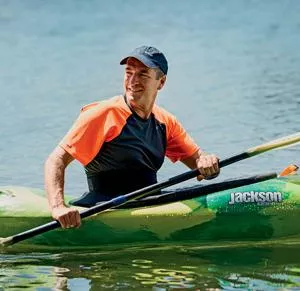
SUN | John Woolard
DIRECTOR, BRIGHTSOURCE ENERGY
You have to get John Woolard talking for a while before he'll tell you about the elephants. He saw them when he was a river guide on the Zambezi in 1989, and they were dead, even the little ones. Poachers had hacked the tusks off. That's where Woolard stops the story, even though he's already said it was those months in Zimbabwe that established the course of his life.
"I wouldn't overdramatize it," Woolard says. In his calm, analytical way, he explains the other data points—like a lion orgy and crocodiles stalking monkeys—that led him to the conclusion that he wanted to save the world by harnessing the profit motive. "In my early 20s, I was thinking, 'What do you do with your life? How do you make it meaningful?'"
Since then, Woolard has exhibited a knack for making things happen and making lots of money while doing so. He returned home to Richmond, Virginia, and cofounded a youth adventure camp, which today teaches 1,000 kids a year to rock climb and kayak. At 32, Woolard cofounded energy-efficiency software company Silicon Energy, and he sold it six years later for $71.2 million. Then, in 2006, at age 41, he took on his biggest challenge yet, as president and CEO of BrightSource Energy, a position he held until May; he now serves on its board of directors.
BrightSource builds towers deep in the desert and surrounds them with 100,000 or more mirrors that bounce sunlight onto the tower tip, which boils water that turns to steam and generates electricity. Its largest facility, called Ivanpah, is a three-tower, $2.2 billion spectacle rising just north of Interstate 15 in the Mojave Desert. When it goes into operation this year, it will be the world's largest solar-concentrating plant, delivering 377 megawatts of electricity to the California grid, enough to light 140,000 homes. Two more towers are planned for the California desert, scheduled to come on line in 2016.
By Woolard's calculations, the world has to build six large, fossil fuel-free power plants each week for the next 40 years to stave off the 450 parts per million of carbon dioxide in the atmosphere that is the current definition of climate catastrophe. He wants to see to it that BrightSource builds a lot of them. (That is, if they can be built responsibly; Ivanpah is dogged by concerns over its impact on desert tortoise habitat.)
How did a river rat end up building multibillion-dollar energy projects in the desert? In part thanks to Camp Mondamin, the North Carolina summer camp that Woolard attended starting at age 11, whose counselors included some of the nation's champions in whitewater kayak slalom. The sport requires a clearheadedness amid boiling rapids, and at age 12, Woolard determined he would be a champion too. He mowed lawns and got a paper route to pay for gear and trips. He bought his own kayaks and later a car to carry them. He trained for years but never achieved his goal of making the U.S. national team. So he turned his tenacity toward the waterfalls and treacherous hydraulics known as Class V rapids. He began doing big water purely for fun, a practice that he continues to this day.
Woolard's propensity for making millions doesn't extend to spending them, though. When his 2001 Toyota Prius died, he took to driving his wife's old Honda Pilot, which has 120,000 miles on it but fits his kayaks for runs down California's Tuolumne River. He'd like a new car, but there's the cost—the carbon cost—of buying a new vehicle versus keeping what he has. He'll have to run the math on that.
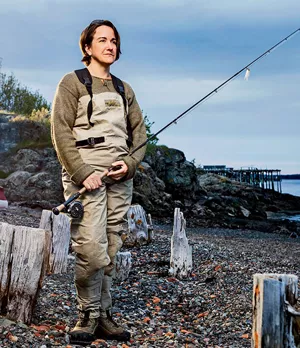
Tides | Gayle Zydlewski
RESEARCH ASSOCIATE PROFESSOR, UNIVERSITY OF MAINE
The largest whirlpool in the western hemisphere lies in a channel on the coast of Maine and does curious things to the water. Ferocious tides race over deep outcroppings, causing the smooth surface to suddenly rip apart or to issue rude burps. The whirlpool is known as Old Sow, and its eddies are called piglets.
It was probably a piglet that grabbed Gayle Zydlewski's research vessel one afternoon in June 2010 and spun it silently on its keel. The anchor line wrapped itself around her bundle of underwater sensors. Then the aluminum arm that held them to the boat started bending and warping like tinfoil. "Cut the mooring line!" she yelled to the skipper. He hesitated. She added, "This gear is worth $100,000!" The skipper cut the line.
That day's rescue of a sonar camera and a single-beam fish finder allowed Zydlewski to continue a five-year exploration of what lies below the surface of Cobscook Bay. Her quest has far-reaching consequences for the capture of tidal energy. Last September, the Ocean Renewable Power Company became the first to deliver tidal power to the U.S. grid when it bolted a 98-foot-long turbine, shaped like a set of old-school lawnmower blades, to the estuary floor. Zydlewski's job is to find out what happens to the fish when you do that.
She is well suited to the task. In her spare time she has battled six-foot sailfish off the coast of Florida and teased golden cutthroat from a Yellowstone stream with a fly rod. For work, as a fish ecologist at the University of Maine, she eavesdrops on sturgeon as they migrate from the Penobscot River to the ocean.
Nothing defines Cobscook Bay like its tides. Rising and falling about 24 feet, a larger swing than anywhere else in the United States, it exchanges vast quantities of phytoplankton with the sea through its narrow mouth. Generations of Americans grew up on Cobscook Bay sardines. There were always jobs on the fishing boats or in the canneries, at least until the 1970s, when the fisheries crashed. Now, there is hope that a thriving industry of tidal turbines could replace the jobs that left with the fish. And of course, everyone would prefer that the underwater foils create carbon-free electricity without altering the bay's herring hatchery. Zydlewski wants her observations to determine how many turbines can be safely placed in the estuary. Even more important, she wants to establish techniques that scientists can use to evaluate the impact of turbines on other bodies of water.
During the first-ever fish survey of Cobscook Bay, Zydlewski's team took six-hour-long shifts wading in 47oF water with a seine to catch a few rainbow smelt. I joined them as they boarded a trawler that dragged the ocean bottom with a net. The dripping contents were dumped on the deck, where researchers sorted halibut from sculpin and pawed through piles of scallops, which clattered like poker chips.
The most important data come from those devices that Old Sow almost claimed. A graduate student spends all night on board a ship recording the acoustic blips from a fish finder. Reading piscine behavior in a swift tidal current, at depths of more than 80 feet, is like pointing through fog with a flashlight.
After three years of collecting data, Zydlewski can report that even in fast-flowing currents, fish tend to swim around the turbine during the day, and that those under 10 centimeters long are more likely to swim through the turbine's foils. "It's amazing the things we don't know still," she muses.
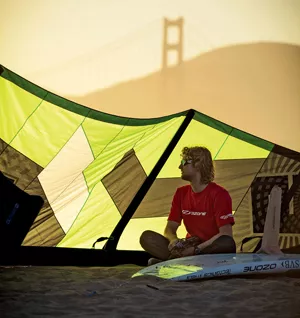
Wind | Johnny Heineken
MECHANICAL ENGINEER, MAKANI POWER
Wing 7 crouches, a black, fearsome-looking thing 25 feet long with propellers lashed down and wires sprouting from its brain console. Technically speaking, it's a kite, but it looks like a wing that scurried from a stealth jet and grew two arms, four props, and a tail.
Makani Power's Johnny Heineken points out the motor pylons, the arms that hold the propellers in place. They were hard for him to prototype, he explains, because they had to be asymmetrically foiled to counteract the inertial forces of the motors. I struggle to square his technical lingo with his sun-bleached good looks. Heineken, 25, is tall and lean, with a mop of curly blond hair you might expect on someone who shares a name with a crisp Dutch lager.
"There's tons of intricacies to make this thing controllable," Heineken says, and right then the wing's ailerons twitch, as if we had startled it. "This is when we hope they don't have the high voltage on," he adds.
By day, Heineken machines the parts for an intelligent, autonomous, energy-generating carbon fiber kite that Makani believes can harvest wind power more cheaply than the giant horizon-altering wind turbines we use today. On evenings and weekends, Heineken is one of the world's fastest kiteboarders. He won the world championships for course racing in 2011 and again in 2012.
To turn wind into electricity, Makani starts with a Ford F-650 truck whose bed holds a tower of strange machinery. The kite hangs from the tower, and when wind conditions are right, the propellers buzz to life and the wing lifts off like a helicopter to an altitude of 400 meters, a tether unspooling behind it. There it catches the crosswind and flies in giant circles. The propellers cease using power and start generating it instead, sending electrons down the tether line to a bank of batteries. Using a fraction of the materials of a big steel wind tower, the wing can catch higher, stronger winds.
Wing 7 produces so much lift that it requires the entire 26,000-pound weight of the truck to stay anchored to the ground. Yet it is just a prototype of a commercial model that Makani hopes will produce 20 times as much power and have the wingspan of a Boeing 737. An even larger model is planned for installations at sea. Google likes the idea so much that in May the search engine giant acquired Makani.
Heineken takes me to Crissy Field in San Francisco, the center of the Bay Area's kiteboarding scene. It neighbors the St. Francis Yacht Club, where Heineken raced sailboats starting at age 12. In 2009, while getting his mechanical engineering degree at the University of California, Santa Barbara, Heineken tried kitesurfing and realized that by eliminating the boat, he could sail 10 knots faster. He loved, he says, "the logistical ease of doing something so fun and free-feeling."
Kiteboards come in many shapes and sizes, meant to catch big air or rip along in high winds, but the one Heineken has designed, with three long pectoral fins, is purposed for maximum speed in any wind. It is suited to course racing, which requires a kiteboarder to navigate a three- to five-mile course, much like the sailing races he grew up with.
Lines braced to his waist, Heineken sends his green kite aloft. He dances across the sand to grab his board as it hits the water, then rockets off toward a buoy and doubles back. At the moment when it seems that he will run aground, he prances around his board like a spider and zooms off again, until he is a dot racing toward the Golden Gate Bridge.
 The Magazine of The Sierra Club
The Magazine of The Sierra Club
